The rise of conversational interfaces – Part 2
11 April 2017 - Natalie Simpson

As we saw in last week’s blog post, SMS and instant messaging offer a simple and intuitive method for people to communicate quickly with friends, family, or even the local handyman. They enable us to create a closer connection with people via interfaces we’re already familiar with, offering instant conversation with anyone, anywhere in the world. It is this instant connection that brands are now wanting to be a part of.
How brands make the connection
In recent years, we have become more and more accustomed to using social media, such as Twitter or Facebook, as direct routes to communicate with brands and services. This direct form of contact has only increased our expectations of speedy or often instant responses. So, it should come as no surprise that brands are utilising this connection further through messenger interfaces, most commonly in the form of ‘chatbots’.
Over the last few years, advances in machine learning and natural language processing capabilities have made chatbots a viable option for brands wanting to communicate with customers directly. It seems like every company has been jumping on the chatbot bandwagon – but more about that later.
First things first, what in fact are they, how do they work and what are the incentives for brands to develop a bot?
Chatbots – what are they?
A chatbot is a piece of software that understands and replies to typed commands or questions using human language via a chat interface.
It uses rules, or sometimes Artificial Intelligence (AI), to respond in a human-like way, guiding users to a solution. The service could be any number of things ranging from functional to fun and lives in any major chat product, most notably Facebook Messenger, the experience for the end user being just like messaging a friend.
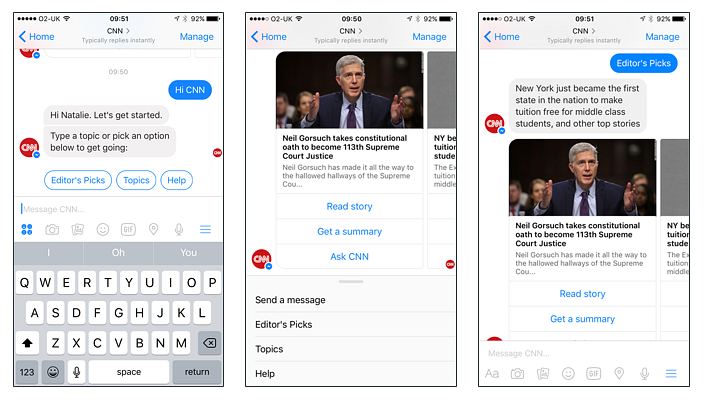
So, how do they work?
In the future, many companies are hoping to develop bots to have natural conversations indistinguishable from human ones. However, at this stage we are seeing two different models:
1. Retrieval based:
These function using rules and a bank of existing responses. This type of model is the easiest to develop and the most common type of bot we see today.
Responses are pre-defined: The bot can only respond to specific commands and therefore responses are limited. They have a repository of words they understand and replies that can be used. But, problems arise when they are handling unseen cases for which no appropriate pre-defined response exists.
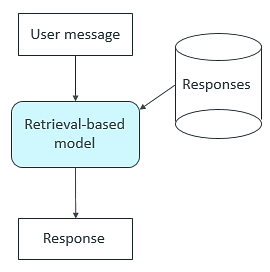
They can’t refer to contextual information: These bots can’t refer back to any information mentioned earlier in the conversation and only answer based on matching keywords from the user statement.
Using them can be frustrating: They are only as smart as the developers have programmed them to be. Often, they might not understand what the user means.
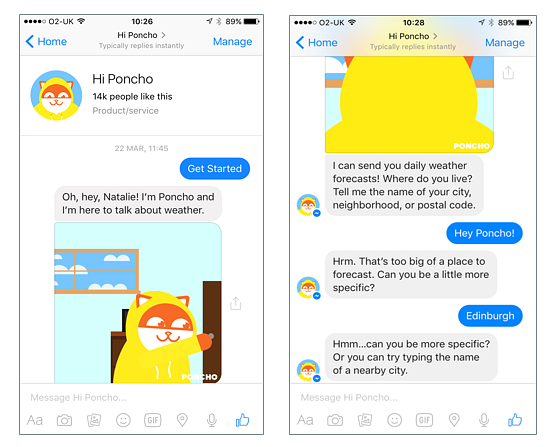
In saying that, due to the collection of existing responses they do not make grammatical mistakes. These models work best for chatbots that just perform a simple task and nothing else.
2. Generative models:
Use machine learning/AI. These models are tricky to develop and currently an active area of research. The few that currently work reasonably well are still at in the early stages of build.
They generate responses: This is done using AI, so replies are created from scratch. They understand language, not commands so users don’t need to use specific words when talking to them. These models continually become smarter as they learn from user interaction.
They can refer back to context: These bots give users the impression that they are talking to a real human, being able to refer to input mentioned earlier in the conversation.
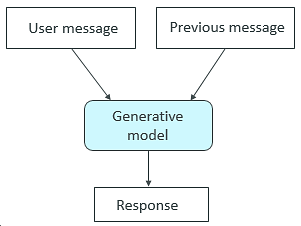
Grammatical mistakes can be common: Especially on long sentences and typically require huge amounts of training data. These mistakes can be costly, providing an inconsistent interaction and potentially driving users away. This is why for now most of the chatbots we come across are retrieval based.
Where do we find these chatbots?

Chatbots can be found in a few of the major messenger platforms including Slack, WeChat, Kik and most notably Facebook Messenger.
Last year, Facebook announced that they were opening up their Messenger platform to third party chatbots(this will open in a new window). The move meant that Messenger is now no longer just a place for conversation but becoming a marketplace where business transactions can take place.
For brands looking to connect with Messenger’s 1 billion active users(this will open in a new window), bringing the business directly to the source isn’t a bad call. Messenger’s huge user base only looks set to increase, with it being the most downloaded app of 2016(this will open in a new window) it’s growing faster than Facebook itself.
Since launch, the number of chatbots on Messenger has multiplied exponentially. In June 2016, there were 11,000 available and by the end of the year, this increased to over 34,000(this will open in a new window).
And it’s easy to see why…
With chatbots, businesses are available 24/7
A recent consumer survey(this will open in a new window) revealed that over half of customers expect businesses to be reachable 24 hours a day, 7 days a week. These same customers prefer to connect with companies through messaging platforms rather than phone or email and would prefer to have easy access to multiple brands integrated into an app they already use.
Chatbots are a way to scale and customise these one-on-one conversations. There are two ways that brands can engage with customers on messaging apps:
- The first is to set up a call centre where real people are chatting to customers all day long. Not only is this not cost effective, but near impossible for smaller businesses.
- The second is developing a chatbot. This can talk to multiple users simultaneously, providing information faster and more efficiently that a person could. No need for users to be put in endless hold queues or navigating through various departments before speaking to someone again!
Brands can establish a relationship
Messaging is a medium that allows brands to establish a relationship through conversation. In previous years, brand awareness has been built over a number of years via expensive advertising campaigns with succinct and generic messaging. For the first time, marketers now have a two-way channel with customers that has no time or length restrictions.
Content can be personalised based on customer preferences
Chatbots already have access to user’s social profiles so customer information is provided on the spot. No downloading an app or signing in required from the user. Therefore, they have the data to share personalised content based on customer preferences and transaction history.
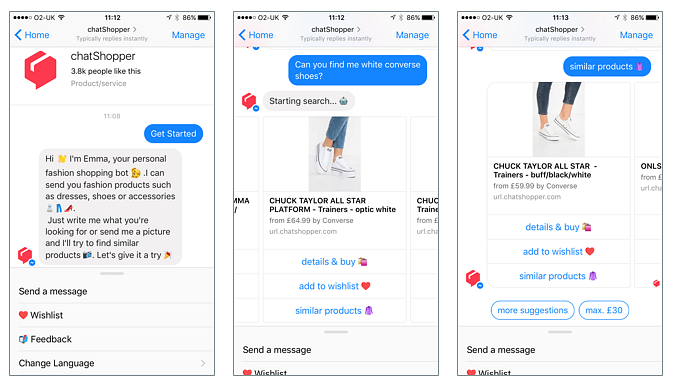
Chatbot UX is familiar and simple
Users can interact with multiple brands via the familiar messaging app UI. There’s no need to learn a new UI each time a user interacts with a different company and first-time users get immediate value. Chatbot UI is natural language so a few words to the right chatbot lets users quickly fulfil complex tasks. Talking to brands via a chat thread feels more like a conversation than a transaction.
In the future, Facebook wants users to be able to interact with any product or service within Messenger itself. It would not only then be a place people go to chat to family or friends but the place they go to call a taxi, book a table or check the weather.
This all sounds great in theory, where do we sign up? But has this in fact been the reality for chatbots? In the next blog article, we take a look at our favourites, which ones are working well along with what this means in terms of user experience.
You might also be interested in...
European Accessibility Act Now in Force: What Your Business Must Do
28 June 2025The European Accessibility Act is now in force, requiring organisations to ensure digital and physical products meet new accessibility standards across the EU. This major milestone will make physical and digital services more inclusive across the EU - find out your obligations.
Read the article: European Accessibility Act Now in Force: What Your Business Must DoConsumer Duty Compliance: Measuring Outcomes That Matter
4 March 2025Explore how financial services can move beyond traditional satisfaction metrics to master outcome measurement for Consumer Duty compliance. Learn about Key Experience Indicators (KEIs) and strategic approaches with User Vision's expertise.
Read the article: Consumer Duty Compliance: Measuring Outcomes That MatterJoin our Accessibility Research Panel!
8 July 2024Do you or someone you know have a disability? If so, we’re welcoming participants to join our research panel of users with disabilities which helps us to gather insights into the disabled user experience. We conduct usability tests and other research with individuals with disabilities to gain clear, first-hand evidence to understand the barriers they face and to develop effective solutions. Find out more and help grow our research panel.
Read the article: Join our Accessibility Research Panel!